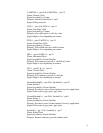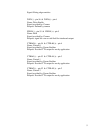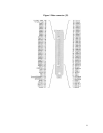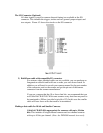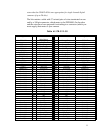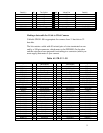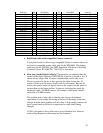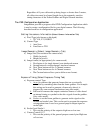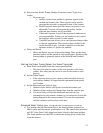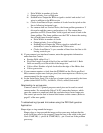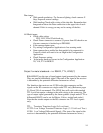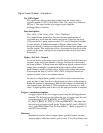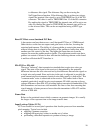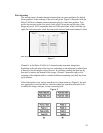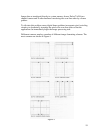12
d) Exposure and Strobe Timing Settings (Exposure control Type set to
strobe)
i. Exposure type
a. Strobes set the frame grabber to generate signals at the
strobe0 and strobe1 pins. These signals can be used to
program the exposure or integration time of the camera.
b. Fixed Exposure means that the camera’s exposure is not
adjustable. You can still program the strobes, but the
exposure time features are not available.
c. Unknown Exposure is used if the exposure is unknown or
not programmable. In this case, the strobes do not control
the exposure and are used for other output.
d. Variable Exposure allows you to set exposure timing within
a software application. The exposure time is added to the
strobe duration if only 1 strobe is enabled or to the time
between strobes if 2 strobes are enabled
e) Delay and Period
i. Delay and Period are part of the strobe timing. They set the delay
between strobes and the period of each strobe pulse. Strobes set the
frame grabber to generate signals at the Strobe#0 and Strobe#1
pins.
Setting the Video Timing (Select the Video Timing tab)
a) Enter Pixel clock speed (from the camera specification)
i. The pixel clock speed is used to set the clock generator of the frame
grabber. This setting must be correct in order for the camera to work
properly.
b) Set the Frame Speed.
i. If the exposure time on your camera (which should be listed in
your camera manual) is longer than the minimum frame period,
use Variable
c) Set the Horizontal and Vertical Sync.
i. Number clocks before valid pixels from the horizontal sync
ii. Number of lines before valid image lines from the vertical sync
iii. You most likely will find the horizontal and vertical sync
information in your camera's manual or you can derive it from the
timing diagram in the camera manual. You can also experiment
with the numbers and see what works best.
Advanced Video Timing (Select the tab and enter the appropriate information)
a) For cameras that use Horizontal Drive, the frame grabber generates an
Hdrive pulse and the camera synchronizes to it. The camera then generates
an LDV (Line Data Valid) signal and sends it back to the frame grabber.
The frame grabber uses the LDV to detect the starting pixel of each line
from the camera.



